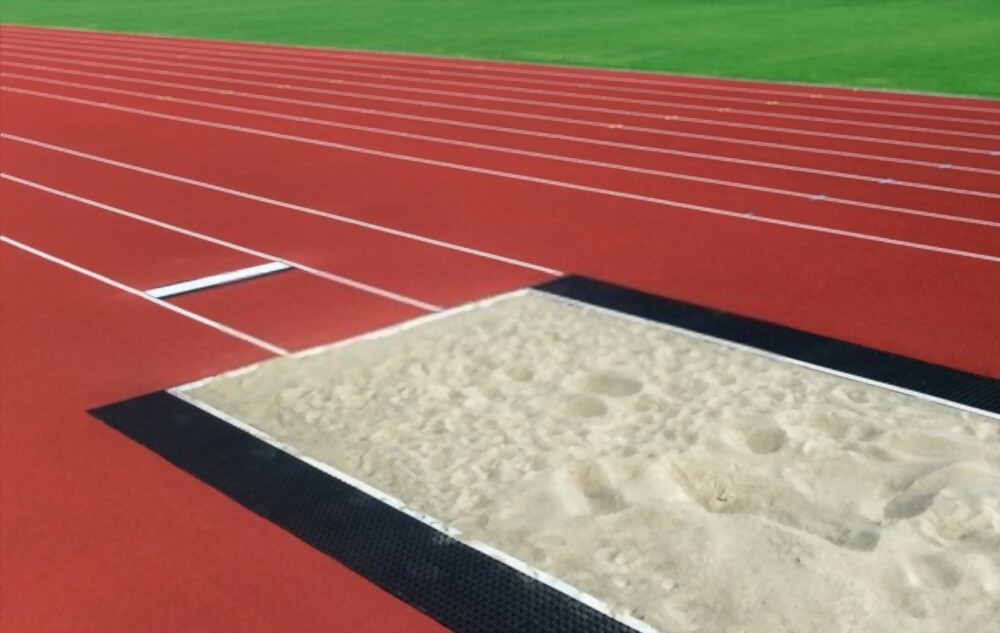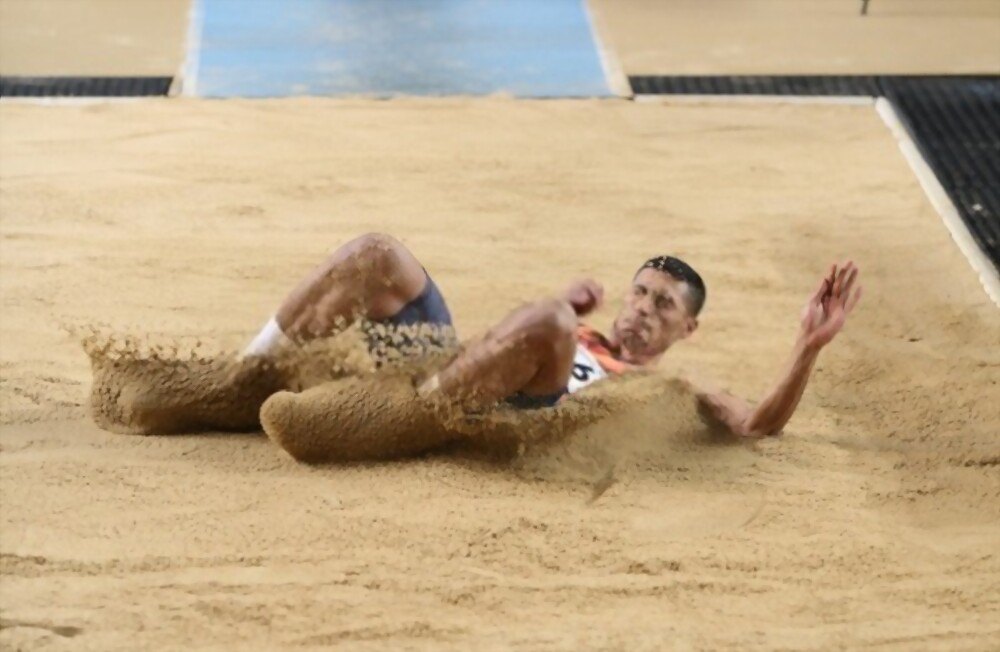As athletes leap into the sand and show off their power and skill, the Long Jump Pit is a crucial part of the track and field event. The dimensions of the pit are carefully regulated by the International Association of Athletics Federations (IAAF) to ensure fair competition for all athletes. We’ll look at the dimensions of a long jump pit in this guide and how they affect performance in the future.
Long jump pits must have a minimum width of 2.75 meters and a length of 7-9 meters, which equates to 9.02 feet by 22.97-29.53 feet.
Long Jump Pit Dimensions

The dimensions of a long jump pit are regulated by the International Association of Athletics Federations (IAAF) to ensure fair and consistent competition for all athletes.
- The long jump pit must be at least 7 – 9 meters (22.97 to 29.53 feet) in length and 2.75 meters (9.02 feet) in width.
- The runway required for a successful long jump should measure 1.22 meters (4 feet) in width and must extend at least 40 meters (131.23 feet) from the start of the runway to the beginning of the take-off board.
- The width of the take-off board must be around 1.22 meters (4 feet), a length of 0.2 meters (0.66 feet), and a height of 0.1 meters (0.33 feet). The take-off board and beginning of the long jump pit should have a minimum distance of 2 meters (6.56 feet).
- Borders for the runway and long jump pit must be 0.05 meters (0.16 feet) wide. Dashed lines should be spaced 0.05 meters apart when used as a border.
An Overview of Long Jump Pit Specifications
- The long jump sand pit should be filled with a minimum depth of 0.3 meters (0.98 feet) at its edges, with the center of the pit being slightly deeper.
- For a long jump pit to be safe and suitable for athletes, it should ideally be filled with either pure quartz sand or wasted river sand.
- The top surface of the long jump pit must be even with the take-off board, in order to ensure a safe and fair event.
- Sand grains typically measure no more than 2 millimeters (0.08 inches) in diameter, while smaller particles measuring 0.2 millimeters (0.008 inches) take up no more than 5% of the total volume of sand.
- The take-off board should be adjustable in height to ensure an athlete’s safety by preventing any potential tripping hazards.
- The take-off board and the long jump pit must be bordered with a flexible material that has rounded edges to help prevent injuries.
- Long throws, such as javelin and shot put, should not be conducted concurrently with long jumping events due to the potential for interference.
Related: Single And Double Squash Court Dimensions
What Is the Difference Between the Long Jump and the Triple Jump?
The long jump and the triple jump are both track and field events that involve jumping, but they are distinct events with their own set of rules and techniques.
The long jump, also known as the broad jump, involves running down a runway and jumping as far as possible into a pit filled with sand. Athletes must land in the pit and the distance from the takeoff board to the nearest point of the impression left in the pit is measured and recorded as the athlete’s jump distance.
The triple jump, also known as the hop, step, and jump, is a multi-phase event that involves a hop, a step, and a jump. Athletes begin by hopping on one foot, then make a step with the other foot, and finally, jump as far as possible. The distance of the jump is measured from the takeoff line to the nearest point of the impression left by the athlete’s foot in the pit.
The main difference between the two events is the number of phases and the techniques required to perform each jump. The long jump involves only one jump and the athlete is allowed to use the running start, while in the triple jump, the athlete must perform three consecutive hops, steps, and a jump.
How To Do a Long Jump?

The long jump is a track and field event that involves running down a runway and jumping as far as possible into a pit filled with sand. Here are the basics of how to perform the long jump:
- Approach: Start by running down the runway, building up speed and momentum. As you approach the takeoff board, focus on maintaining good form and staying relaxed.
- Takeoff: As you reach the takeoff board, plant one foot on the board and use the other foot to push off. Keep your body upright and use your arms to generate additional power and lift.
- Flight: As you leave the takeoff board, focus on maintaining good form in the air. Keep your body straight and your arms extended in front of you.
- Landing: As you approach the pit, prepare for landing by bending your knees and keeping your body relaxed. Land in the pit with both feet at the same time, and try to distribute the impact evenly across both legs.
- Measurement: The distance of the jump is measured from the takeoff board to the nearest point of the impression left in the pit.
Here Are a Few Tips To Keep In Mind For the Long Jump:
- Practice good technique: Focus on maintaining good form throughout the jump, as this can greatly impact your jump distance.
- Build up speed: The more speed you have when you reach the takeoff board, the more power you will have for the jump.
- Focus on the landing: Try to land in the pit with your feet together, and try to absorb the impact as much as possible to prevent injury.
- Train your legs: Strong legs are essential for the long jump, work on your leg strength and power.
- Practice regularly: Like any sport, practice is key to improving your performance.
The long jump is a challenging and exciting event that requires a combination of speed, power, and technique. With practice and dedication, anyone can learn to perform the long jump at a high level.
FAQs
What are the dimensions of the long jump area?
The dimensions of a long jump area vary depending on the level of competition. In general, a long jump area should have a minimum width and length of 9 meters and 2.75 meters.
How many meters is a long jump pit?
Long jump pits, also known as sand pits or landing areas, usually measure around 9 meters long. They can vary in width, but they’re usually at least 2.75 meters wide to match the jump area’s dimensions.
How much sand is in a long jump pit?
A long jump pit usually has enough sand to provide a safe landing for the athletes, but the amount can vary. It depends on the regulations and requirements of the competition on how deep the sand is, but it can range from 30 centimeters (12 inches) to 60 centimeters (24 inches).
What is a long jump pit?
It’s a place where long jumpers land after their jump filled with sand or similar soft material. The sand in the pit keeps the athletes safe and gives them a safe landing surface. It also helps measure the distance of the jump accurately.